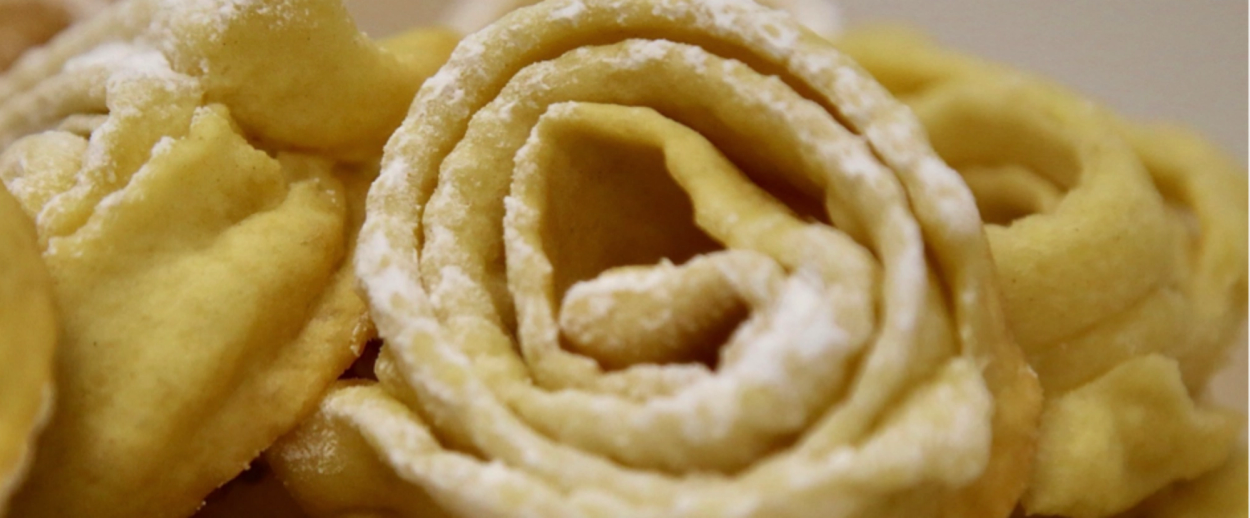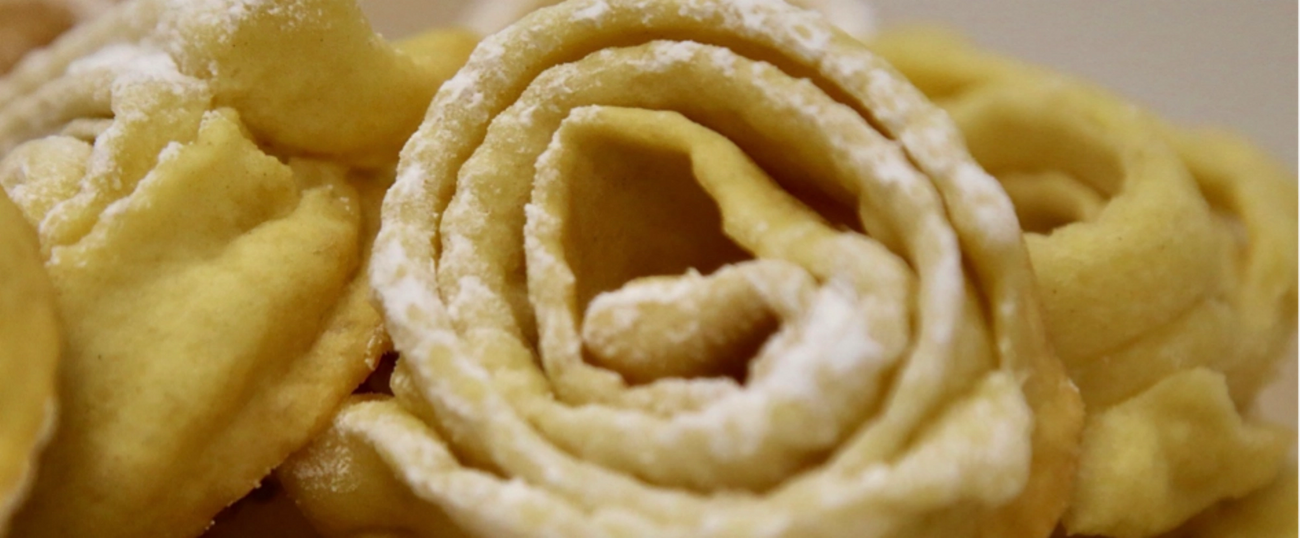This Purim, Celebrate with Hojuelas, a Delicious Sephardic Treat
Move over, hamentaschen




Hojuelas make us travel. From Spain to Argentina, all Sephardim are familiar with these rolled pastries, soft and melting, quickly fried and delicately sugar coated. Even if it bears different names such as “fijuelas,” “fazuelos,” “ojuelas,” their characteristic form is undeniably reminiscent of Esther’s meguillah, and that is why hojuelas are prepared for Purim. I love using recipes from the late Spanish Middle Ages. Adapting them while remaining as close as possible to the original preparation, and keeping the typical Sephardic culinary twist, gives the dish its main feature. However, the hojuelas are self-sufficient. They are so meaningful and overflowing with history that we cannot change them, we should not change them. In fact, even if the term “hojuela”–from the term “hoja” that means “very thin sheet”–existed as early as 1495 in the dictionary of Nebrija, the first time that this pastry was mentioned in a text among other dishes was in the 16th century. And it was not in a cookbook. It was in the famous story entitled La Lozana Andaluza of the Spanish Andalusian author Francisco Delicado. It describes Aldonza’s life, a Jewish woman–whose origins have been voluntarily undisclosed–who arrived in Rome, fleeing the Spanish Inquisition persecution. At the beginning of the story, Aldonza told a woman that when she was living in Andalusia, she used to prepare hojuelas, but also other dishes like the “olla reposada”–which refers to adafina, the Shabbat dish for the Spanish Jews. The hojuelas are thin strips of dough, shaped into a roll while frying.
Nowadays, Sephardim from Argentina and from other diasporas prepare hojuelas for Purim and also for Yom Kippur. In Spain, hojuelas are eaten for Purim by the Jews but also by the non-Jewish people for the special feast called Semana Santa–The Christian festival which always takes place within a few days of Purim. This is explained by the fact that hojuelas were introduced in some Christian Spanish cookbooks as early as 1599.
So, in memory of Esther’s story and prowess, raise your sleeves, warm your wrists, to prepare, even in advance, thin and melting hojuelas. A tasty and sweet bite to distribute and share.
Ingredients for 15 hojuelas:
2 ½ cup (300 g) of flour
1 teaspoon of baking powder
3 beaten eggs
¼ cup (50 g) of sugar
2 teaspoon (10 ml) of water
¼ teaspoon of salt
7 teaspoons (30 ml) of neutral oil
frying oil
Syrup:
½ cup (100 g) of water
¼ cup (50 ml) of orange blossom
½ cup (100 g) of sugar
To decorate:
½ cup (50 g) of icing sugar
¼ cup (30 g) of sesame seeds
Utensils:
Salad bowl
Big spoon
Plastic film
Rolling pin
Rolling cutter embosser
Parchment paper
Small pot of water
Fork
Presentation dish
Soup plates
Preparation:
Put the flour, the baking soda, the beaten eggs, the sugar, the water, the salt and the oil in a salad bowl and mix with a spoon. Finish mixing with your hands. The dough should be smooth, without lumps.
Wrap the dough in a plastic film and cool for 15 minutes.
Put flour on the working surface and extend the dough. It must be thin and not sticky.
Take the rolling cutter embosser and cut strips 1,18 in (3 cm) wide and about 15,74 in (40 cm) long.
Heat the oil over medium heat.
Take a strip with your right hand and start wrapping it around your index and middle finger with your left hand. For this first round, the dough should be a little tight. Make a second round by squeezing less, then a third round, squeezing even less and seal the end of the dough by dipping your right finger into the water and sticking the end of the hojuela.
Take a fork and introduce it in the heart of the hojuela, where the fingers were, and plunge the hojuela into the oil by turning the fork as if you wanted to roll the hojuela even more in the same direction. Cook for 8 to 10 seconds then turn it over. It must remain white.
Set aside and continue in the same way for all hojuelas.
Prepare the syrup: Pour the water, the orange blossom and the sugar into a pan. Mix everything over low heat for about five minutes. The mixture should remain very liquidy but transparent.
Plunge the hojuelas into the sugar syrup, being careful not to break them, and put them in a presentation dish.
Take two soup plates. In the first one put the sesame seeds, and in the other one put the icing sugar.
Take a hojuela and put one of its sides in the icing sugar or in the sesame seeds.
Hélène Jawhara-Piñer is a PhD candidate in History, Medieval History, and the History of Food in France. She was awarded the Broome & Allen Fellowship from the American Sephardi Federation in 2018. She gives Sephardic cooking classes in France specializing in Spanish and Moroccan Jewish cuisine.